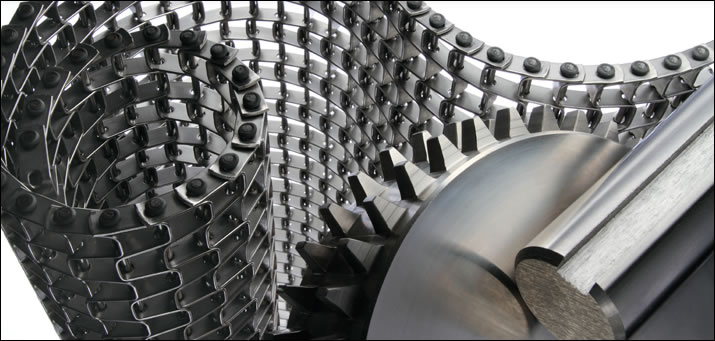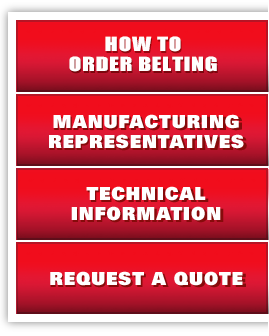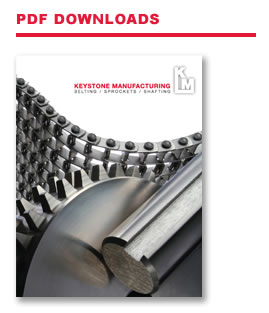Key-Turn radius belting has all the characteristics of straight-line flat wire belts, with the additional capability of making right or left turns of up to 180 degrees (360 degrees for spiral systems).
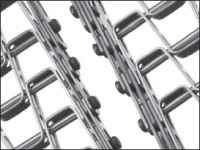
T1 - 1" x 1" Mesh, Welded Selvage
Shown with 0.062" and 0.090" thick double reinforcing links |
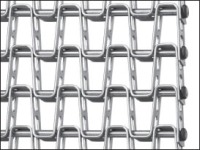
T2 - ½" x 1" Mesh, Welded Selvage |

Key-Turn Specifications
| |
Width |
Approx. Wgt. |
| Design |
Mesh |
Min |
Max |
(Lbs./Sq. Ft.) |
| T1 |
1" x 1" |
7" |
48" |
3.1 |
| T2 |
½" x 1" |
7" |
48" |
3.4 |
KEY-TURN BELT DIMENSIONS:
• Flat strip = 1/2" wide x .062" thick, round edge • Connector rod = 6 gauge (.192" diameter), high tensile strength

Materials Available
- Galvanized steel
- C1050 high carbon steel
- T-304 stainless steel
- T-316 stainless steel
- T-201 stainless steel
|

EDGE REINFORCEMENT
- Reinforcing links strengthen outside edges.
- Available in 0.062" or 0.090" thick T-304 stainless steel material.
- One or two links may be placed on either edge.
- Reinforcing links on both edges enable belt to be flipped for longer life.
|

Features
- Turning ability enables belt to avoid obstacles, operate in limited space, and eliminate troublesome transfers.
- Elongated slots allow pickets to nest, giving the belt the ability to turn and also providing for easy and
thorough cleaning.
- Stainless steel Key-Turn belts are USDA approved for use in federally inspected meat and poultry plants.
- H series sprockets for heavy duty belts are suitable for Key-Turn belts.

Turning Radius
- Minimum belt turning radius is equal to 2.2 times the belt width, measured on the inside radius of the belt.
- No maximum turning radius.
- For tighter turns, two or more narrow width belts divided by a rail may be used.
- Conveyor should be designed to include a straight run 3 times the belt's width before engaging sprockets
after a turn.
- Consult Keystone Manufacturing before using the belt in a non-powered turn situation, as this set-up
can cause excessive strain.
- Maximum allowable drive tension is 300 pounds.
- For belt speeds above 15 feet/minute, maximum drive tension is reduced to 200 pounds.
- Both load and return side belt supports should be either rollers or UHMW polyethylene to reduce friction
to a minimum.
